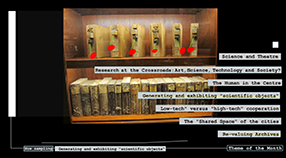
The Raablab interface develoved by Norton and Veciana in 2013.
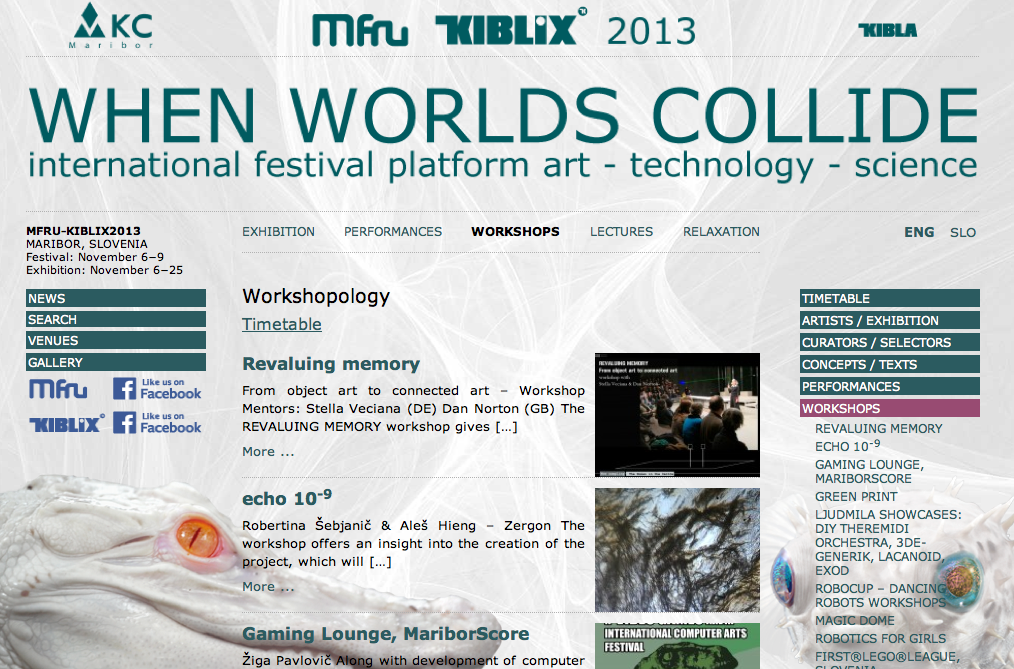
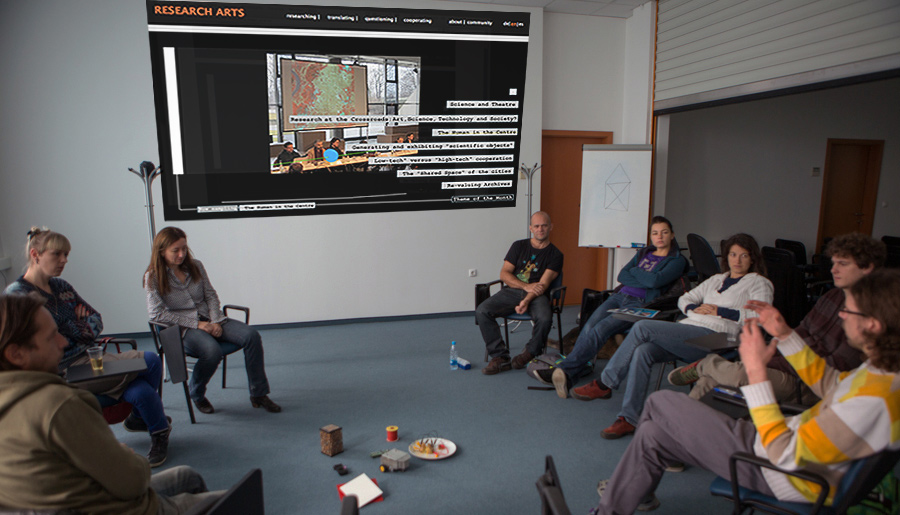


REVALUING MEMORY workshop at MRFU-KIBLIX2013, 6th November 2013 (Photos: Bostjan Lah).


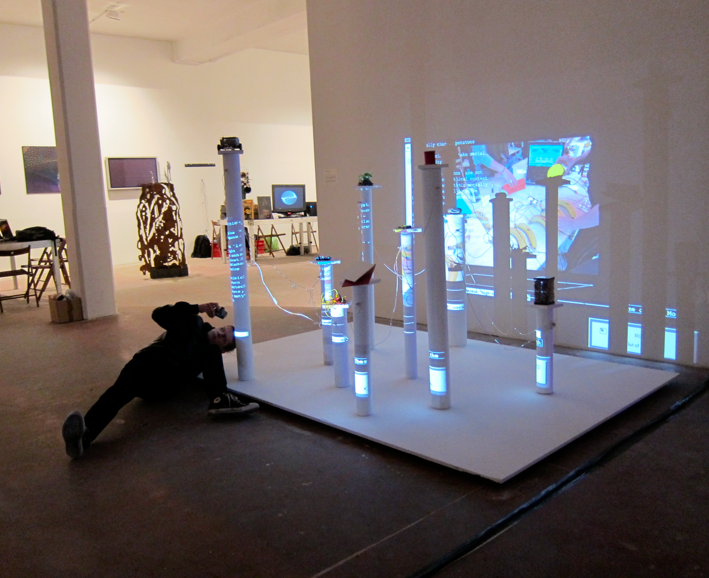
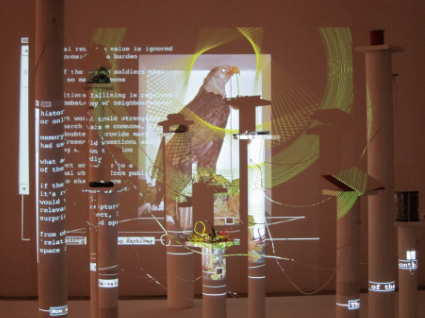
»Revaluing memory« Installation respresenting common narrative and co-designed project at MRFU-KIBLIX2013, Maribor, 2013 (Photos: Dan Norton, Stella Veciana).
|
»From RAABLAB online interfaces to local offline cooperation: the interdisciplinary REVALUING MEMORY workshop at MRFU-KIBLIX2013 Festival«.
Stella Veciana und Dan Norton.
Digital collections and archives contain hitherto unimaginable amounts of knowledge, which is potentially easy to access and share. At the same time information becomes lost in the archive. Browsing is currently arduous in digital material. How do we invigorate the contents of archives and revalue them? Can interaction with stored memory in archives and libraries, transform them into generative tools for production and discovery?
RAABLAB (Research arts + ablab) adresses exactly these research questions. RAABLAB is a preliminary project developed by Dan Norton and Stella Veciana which is the combination of two practices.
Norton's practice as ablab works to transform interaction with information representations into experience of audiovisual and physical space, and playful action. His practice develops audiovisual instruments from archive material.
Veciana's practice collects new approaches and research models within the intersection of art, science and technology for a research agenda in this field and explores new ways to read and process information that bridges creative and scientific means for building knowledge.
The RAABLAB interface
These two practices/methods have first been brought together in an online interface, where Norton built a tool for accessing and recombining the knowledge developed in the practice of Veciana and stored in the Research Arts online collection of new research lines.
This interface, called Raablab, was the first collaborative project from the »Synergy: Interdisciplinary Practice and Theory« workshop organized by HANGAR, a cultural centre based in Barcelona, and the online platform Grid Spinoza . The workshop was a part of the Soft Control project, an interdisciplinary project funded by the Cultural Program of the European Union.
The Raablab interface is a simple mechanism for building new compositions of sound, image, and text through playful exploration of imagery. The interface changes images into triggers that sample texts from the Research-Arts archive of essays creating new links and connections.
The unusual combinations that are generated from the RA archive offer alternate possibilities and bridges between stored content. It is the possibility of the between, which Veciana and Norton continue to explore in a series of interdisciplinary workshops they are staging.
The REVALUING MEMORY workshops
The REVALUING MEMORY workshops are a developing project that brings together artists and scientists to explore interaction techniques that can facilitate different bridges between individual knowledge bases and skill sets. This process of building links is called Connected Art practice. The workshops are based around the simple creative behaviours of selecting and mixing to build connectivity. These behaviours are developed from systems for interacting with sound and music, and particularly from the way a DJ (disc jockey) works creatively with a collection of records. In the workshops a setting is created to connect and integrate personal work into a common narrative and from this process to co-design a local shared practice.
One of these workshops was conducted at the MRFU-KIBLIX Art Science Technology Festival in 2013. The REVALUING MEMORY workshop focused around the events' theme on “the (co)existence of bios and techne” within the frame of the festivals "Workshopology". Workshop participants included Monika Pocrnjić, Andrej Firm, Nataša Berk, Toma Grušovnik, Borut Popenko, iga Bobek, Jerneja Rebernak and Darinka Verdonik.
Each participant brought to the workshop a work of art or research that is, or is represented by an object no bigger than a potato. During the one-day event, participants shared their knowledge and developed skills and resources to collaborate with each other for a joint sustainable network in Maribor.
The workshop process developed around questions as to how can the practitioners implicit knowledge/memory be shared? How can knowledge/memory be re-valued, and through a process of revaluation be integrated in shared practice ? The workshop generated sematic field of connections around each participant’s potatoe, and out of this web of betweeness grew a concept for a co-designed local project: "KULT I NOVACIJA".
"KULT I NOVACIJA" - Mobile Art&Science School
The co-designed local project KULT I NOVACIJA is an Art&Science school to be hosted in a mobile caravan. It will bring together art practitioners, cultural producers, scientists, and technologists from within the community, to share knowledge, teach, research, and practice in public space. KULT I NOVACIJA is conceived as a mobile unit to tour market places, and other city districts where people gather, where it will offer free drop-in workshops and presentations to enable knowledge sharing in public.
The workshops will be free, and the first ‘University on the Street Lab’ of Slovenia’s future Art&Science educational program. An important aim of KULT I NOVACIJA will be to demonstrate value for the future establishment of Slovenia’s first University based Art, Science, and Technology educational facility.
Market-goers each week will be able to learn, consider, and discuss a wide variety of research topics, and be able to share their own skills and knowledge. Artists, scientists, and engineers will place their research in completely fresh contexts, literally in the marketplace of ideas.
The project revalues and reuses materials, knowledge, tools, and practices. The Mobile Art&Science School will share creativity and enjoyment, as well as educate practitioners and the participants alike. KULT I NOVACIJA will explore the value of sharing research in the common repository of general knowledge.
The KULT I NOVACIJA project and the objects of the participants of the workshop generated the »Revaluing memory« installation for the KIBLIX Festival. The visitors could play and experiment interactively with the Raablabs audiovisual interface in the real space of the exhibition.
The following interview explains with more details the development of the whole project presented at the KIBLIX festival:
Interview, Stella Veciana about MFRU-KIBLIX2013 workshop, Maribor, November 2013.
|
|
|

|
Dr. Dan Norton - studierte Bildende Kunst an der Glasgow School of Art und Electronic Imaging an der Universität von Dundee. Er hat vor kurzem (2013) eine Promotion mit dem digitalen RCUK Wirtschaftsprojekt SerenA abgeschlossen: Chance Encounters in the Space of Ideas. Norton stellt seine Werke sowohl on- als auch offline aus, um über Installationen, Live-Performances über virtuelle Werkzeugen Zugang zu digitalen Bibliotheken und Archiven aufzubauen. Sein Werk ist in einer Vielzahl von Arenen gezeigt worden, darunter in Medien und Foren der Bildende Kunst; Technologie-Institute, Film Festivals und Musikveranstaltungen. Im Jahr 2009 war er Mitbegründer von WAKA Espai d'Art, eine unabhängige Kunstgalerie und Kulturverein in La Palma, Spanien. mehr |
|
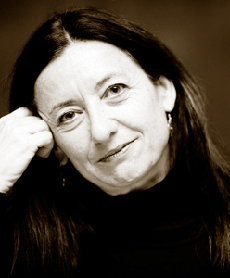
|
Dr. Stella Veciana - Studium der experimentellen Künste (Universität der Künste, Berlin) und der Computerkunst (School of Visual Arts, New York). Promotion über die Schnittstelle von Kunst, Wissenschaft, Technologie und Gesellschaft (Fakultät der Bildenden Kunst, UB). Gründerin der Plattform Research Arts, die sich der transdisziplinären und partizipativen künstlerischen Forschung für Nachhaltigkeit verschrieben hat. Ihre Kunst wurde international in Museen, Galerien, Kunstzentren und Festivals sowie in Stiftungen, NGOs, Universitäten, Forschungszentren und Kongressen ausgestellt (Akademie der Künste Berlin, Kunsthalle Nürnberg, Hangar Barcelona, UNESCO, Heinrich-Böll-Stiftung, Brot für die Welt, ZEF Development Research Center, Degrowth Conference, KIBLIX Festival, etc.). Langjährige universitäre Lehrerfahrung (Facultad de Bellas Artes Barcelona, Leuphana Universität Lüneburg, Technische Universität Berlin, Universidad Politécnica Valencia, University of Saskatchewan Canada, etc.). Mitarbeiterin und Forscherin in inter/nationalen Projekten (Forschungswende, Soft Control, PIPES, Leben in zukunftsfähigen Dörfern). Manager nationaler und europäischer Projekte (ICN). Weiterentwicklung der Lehre als „Reallabore“ für Nachhaltigkeit (Leuphana Universität mit Ökodörfer). Mitglied der Vereinigung Deutscher Wissenschaftler VDW. mehr |
|
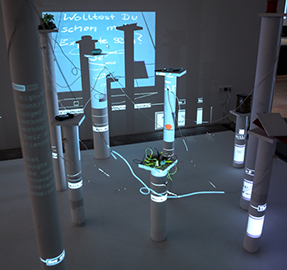
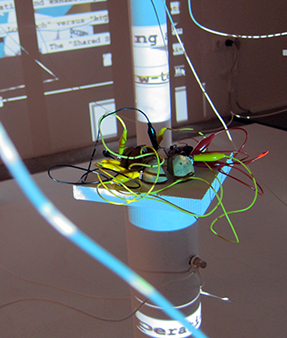
»Kartoffelkonzert« by Tomaž Grušovnik. Part of the »Revaluing memory« Installation respresenting common narrative and co-designed project at MRFU-KIBLIX2013, Maribor, 2013 (Photos: Stella Veciana).
|
»KARTOFFELKONZERT AUF PIEZO-BEEPER. A reflection on artistic practice.«
Tomaž Grušovnik
As a philosopher I'm convinced that artistic expression has primarily something to do with 'aisthesis', or 'sensual perception' - that is to say, for one to appreciate a particular work of art it shouldn't be necessary to read a treatise, or go through a bunch of literature. In order to understand the point of my object at the workshop, for instance, you do not have to read through this comment: you can just skip to the last paragraph.
To understand problems in this, theoretical, way is namely a job of discursive sciences, or of dialectic thought. With other words: I see an art object as something that carries with it a 'paradigm shift', something that is able to deliver a 'punch line' - an object that makes the observer wonder by mere experience of it. An art object thus has to force the perceiver
to spontaneously question one's presuppositions about herself and the world she inhabits.
Now, I'm well aware that no perception unfolds in a vacuum, that all we perceive is 'cognitively loaded', that there is a certain 'framework' from which we understand and perceive things around us - and precisely this is the reason why people from different background view basically the same phenomena as different (a neoliberal politician will perceive a collapse of a production line in a different way than a marxist activist). In this sense 'theory' is always present in what we
'practice' and 'experience', and there is no such thing as 'pure experience'.
However, keeping this in mind while engaging in artistic practice doesn't mean an artist should be primarily a philosopher, or a scientist - that she should theoretically underpin the existence of her object of art: in similar fashion a poet isn't the one who can explain grammatical correctness of her poems, but the one who masters grammar in such a way that it gives her freedom to express herself.
Good artistic practice, then, leaves thinking, wondering, and contemplation to the observer. But to achieve that, the object has to, so to speak, exist right at the edge of the common paradigm,
on the fringes of a common framework from which we experience and understand our world and ourselves, so that it can offer a trans-formative experience - a punch line shaking the established perception. And this I take to be a part of what romanticists - when carried out on a grand scale - meant with their idea of 'creative genius'.
So, let's see how I wanted to play with those ideas in practice at the workshop, connected with
the term 'revaluing' - the term that I understood in analogy to the above mentioned 'punch-line':
The workshop leaders asked the participants to bring with themselves an art object of a size of a potato. Now, I thought that one way how to approach this precondition would be to take the 'potato' idea literally, precisely because I presumed it was meant metaphorically, as a comparison, as an orientation in the sense of volume, its size. I, then, wanted to be literally metaphorical.
But what could you do with a potato at the electronic arts festival? - you could use it as an energy source to power a simple oscillating circuit with a piezo beeper that uses naturally occurring electric potential in a vegetable (when you insert in it two different metals) to produce repeating sound - something like 'screams' of an individual potato. By turning it into a galvanic cell I thus tried to 'give a voice' to the potato, and produced a 'Potato concert on piezo beeper'. The 'punch-line' of this object thus wanted to be the revaluation of a potato, its transposition into a new framework. The potato stays a potato: however, it's not there to quench hunger, but to feed one's imagination. |
|
|

|
Dr. Tomaž Grušovnik - ist Dozent an der Universität von Primorska und Philosophieforscher. 2009 war er Fulbright Visiting Fellow, 2011 als Gastdozent an der Universität von Oslo tätig und 2012 erhielt er den "Herald of Science Prize", der von der Universität von Primorska vergeben wird. Seine künstlerische Laufbahn entwickelte sich von Zeichnungen über Collagen zu was der Autor als "Technologische Expressionismus, er spielt mit QR-Codes, und gegenwärtig mit elektronischen Schaltungen. |
|
|